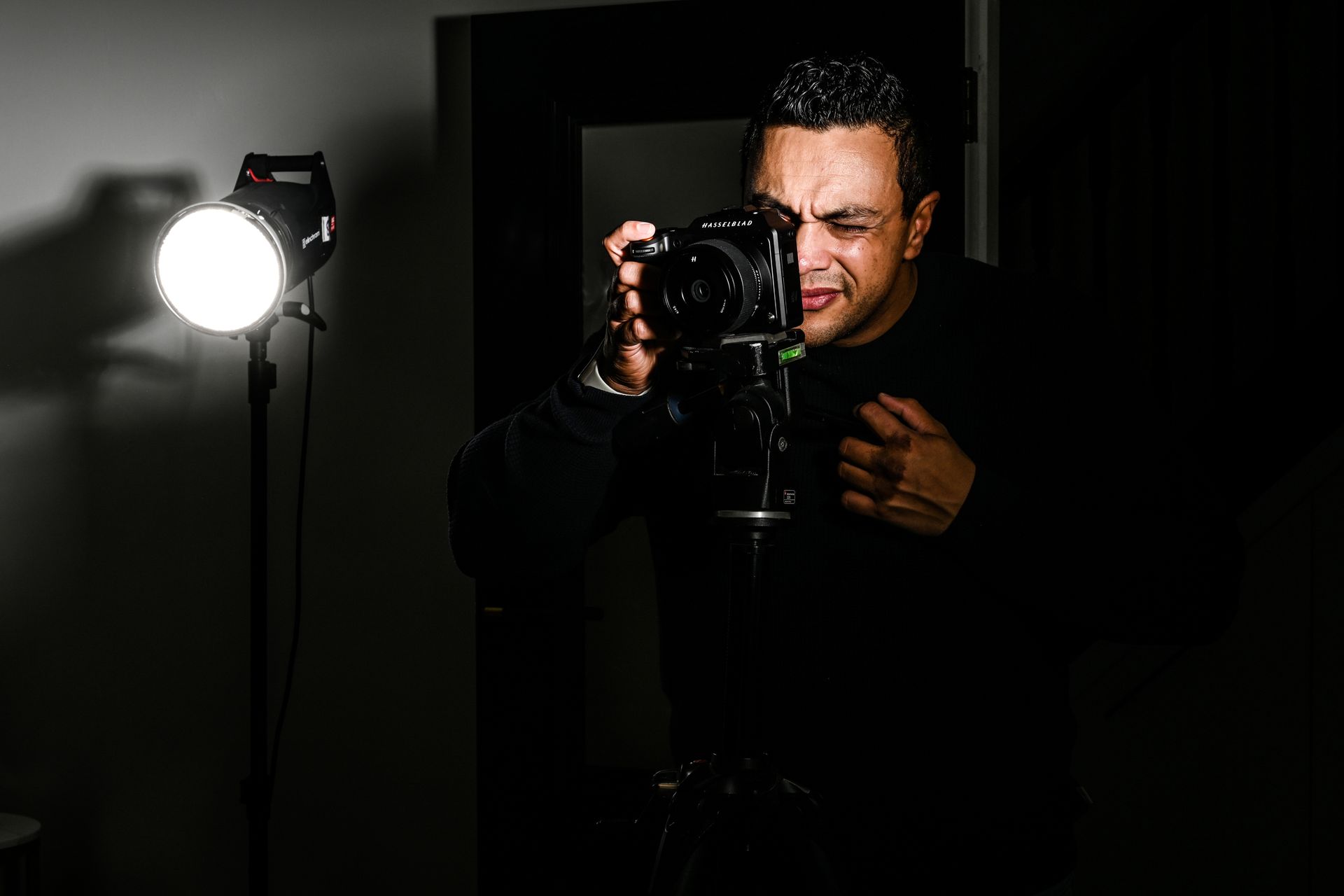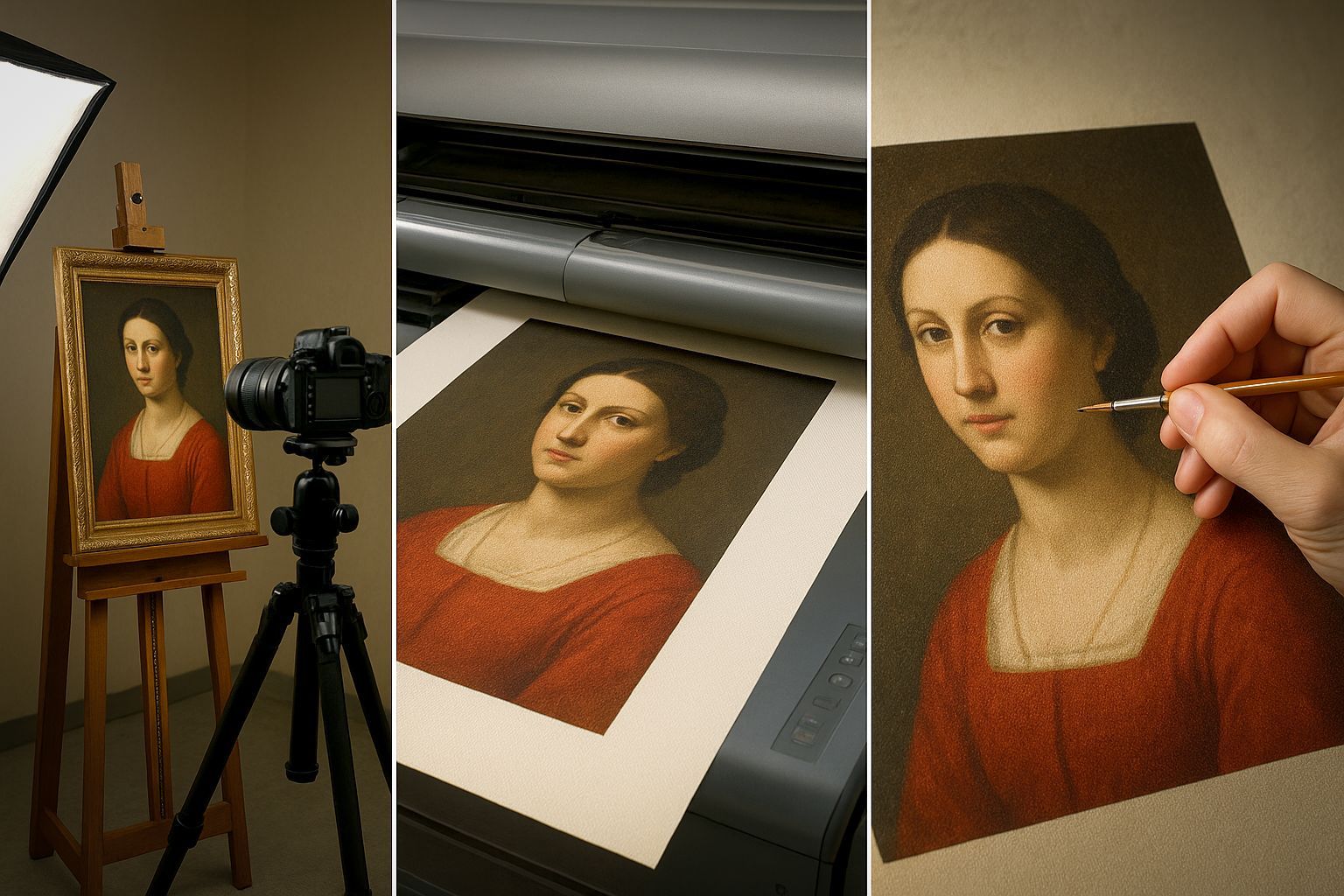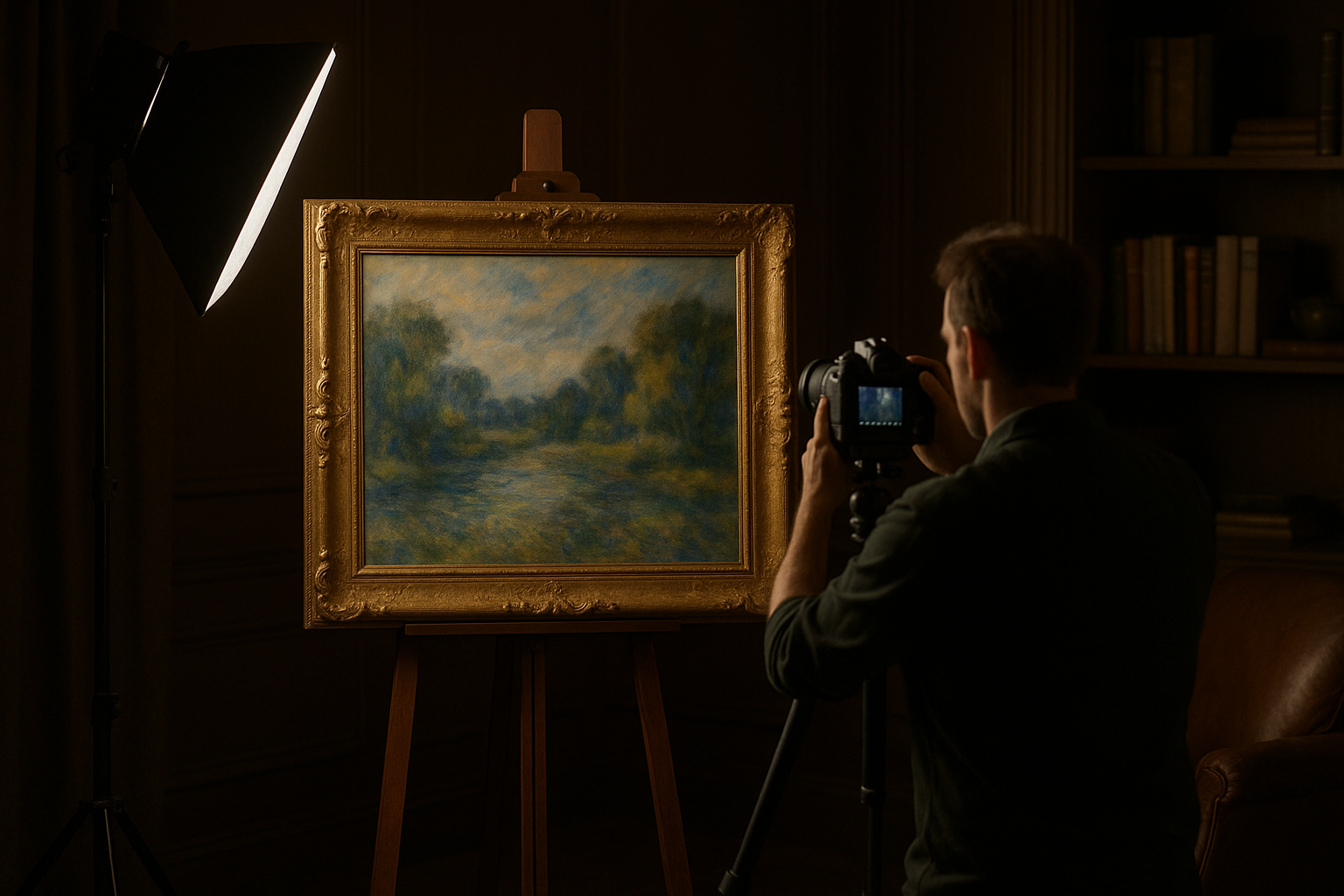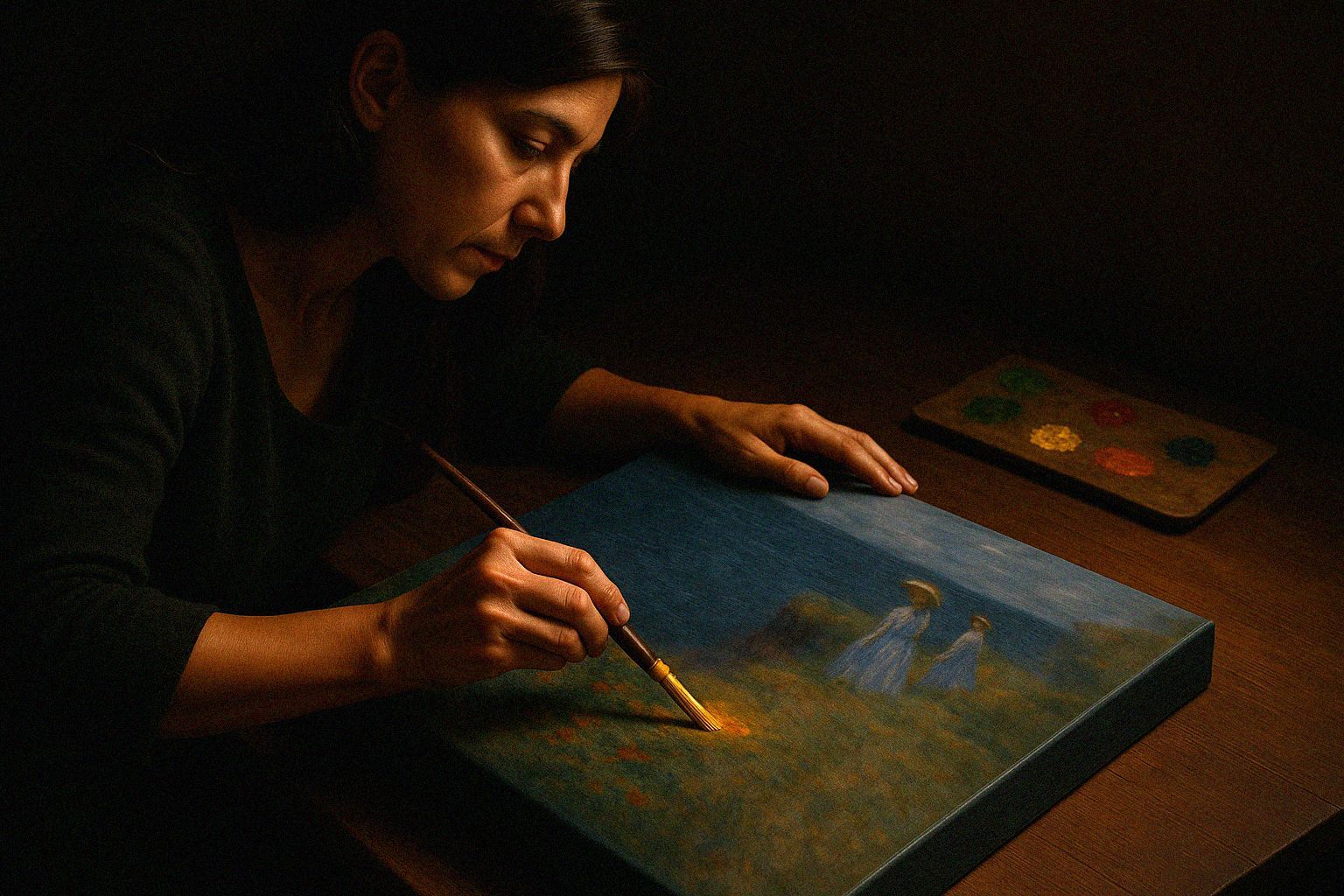High resolution capture of Paintings

High resolution capture of paintings involves using specialised equipment and techniques to create a digital image of a painting that accurately captures its colours, textures, and details. This process typically involves the following steps:
- Preparation: The painting is carefully cleaned and prepared for photography, with special attention paid to minimising the risk of damage or deterioration.
- Lighting: The painting is lit with a set of high-quality, colour-accurate lights that are carefully positioned to provide even, consistent illumination.
- Photography: A high-resolution camera is used to capture a series of images of the painting, with each image covering a small portion of the painting. These images are then stitched together using specialised software to create a single, high-resolution image of the entire painting.
- Colour correction: The resulting image is carefully colour-corrected to ensure that it accurately reflects the colours and tones of the original painting.
- Post-processing: The image may undergo additional post-processing to enhance its sharpness, contrast, and other characteristics.
The resulting high-resolution digital image can be used for a variety of purposes, including archival preservation, reproduction, and digital display. High-resolution images of paintings are often used by museums, art galleries, and other cultural institutions to make their collections more accessible to a wider audience, as well as by researchers and scholars studying art history and conservation.
Capturing the Essence: The Art of Museum Quality Artwork Reproductions



